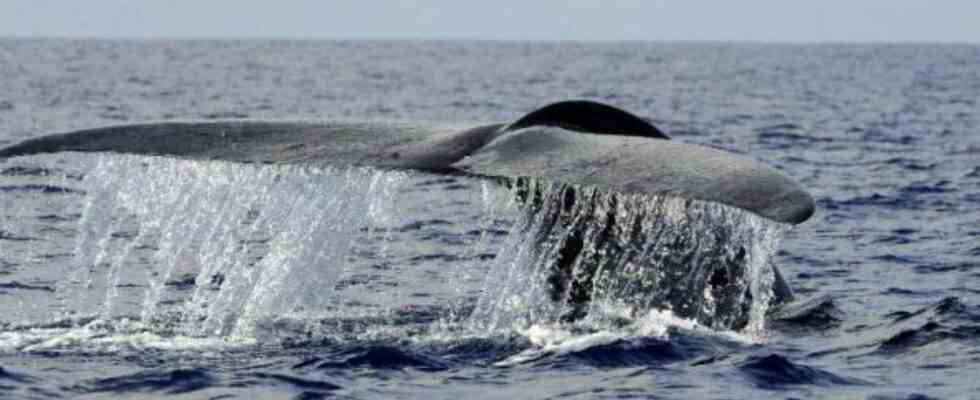It’s a sad number. Blue whales absorb up to 10 million pieces of microplastic each day, according to an estimate published Tuesday, which suggests a greater impact of this pollution on the largest animal in the world than previously thought.
Tiny plastic fragments have already been found from the deepest oceans to the highest mountains, and even inside human organs and blood. To estimate the amount of microplastics ingested by whales, researchers conducted a modeling study, published in the journal Nature Communications.
Modelings
These scientists placed some kind of tags on 191 blue, fin and humpback whales living off the coast of California to track their movements. “Like an Apple Watch, on the back of a whale,” said Shirel Kahane-Rapport, a researcher at California State University, Fullerton, and lead author of the study.
According to the data collected, the whales mainly fed at depths between 50 and 250 meters, where “the greatest concentration of microplastics in the water column is located”, this whale specialist told AFP. The researchers then estimated the size and number of daily bites the whales had and what they were filtering out, by modeling three scenarios. In the most likely scenario, blue whales were ingesting up to 10 million pieces of microplastic per day.
“It is worrying for us”
The largest animal to have ever lived on Earth would thus probably be the biggest consumer of microplastics, ingesting up to 43.6 kilograms every day, according to the study. Although it is spontaneously imagined that whales suck up large amounts of microplastics as they make their way through the ocean, researchers have found that this is not the case.
In fact, 99% of microplastics entered the whales’ bodies because they were already inside their prey. “It’s worrying for us,” Shirel Kahane-Rapport said, because humans also eat these prey. “We also eat anchovies and sardines,” she noted, adding that “krill (small shrimp-shaped crustacean, editor’s note) is the base of the food web,” of the marine food chain.
Previous research has shown that if krill are in a tank containing microplastic, “they will eat it,” the scientist said. Now that the researchers have estimated the amount of microplastic the whales took in, they are looking to determine the extent of the damage. “It’s the dose that makes the poison,” said Shirel Kahane-Rapport.

